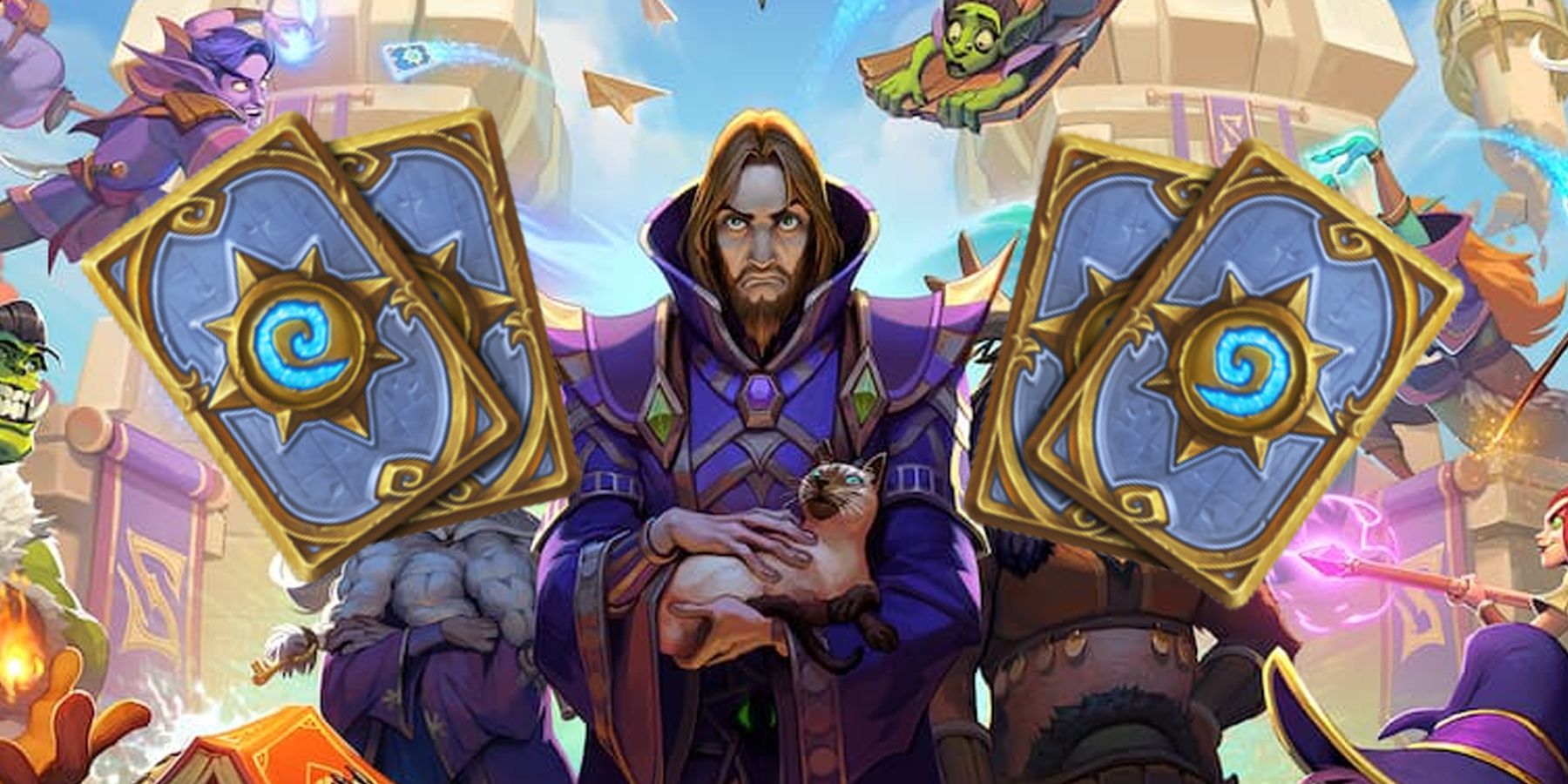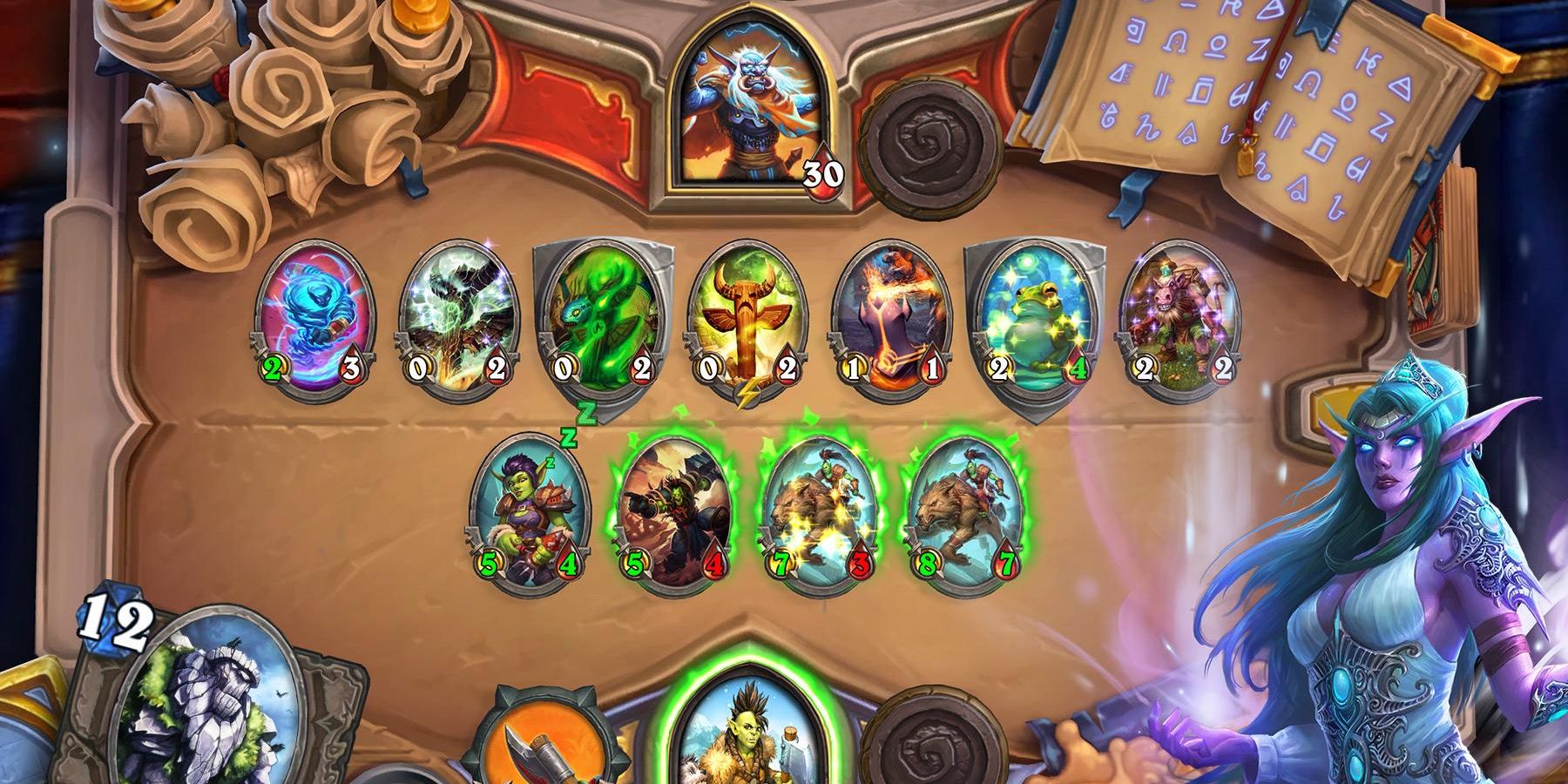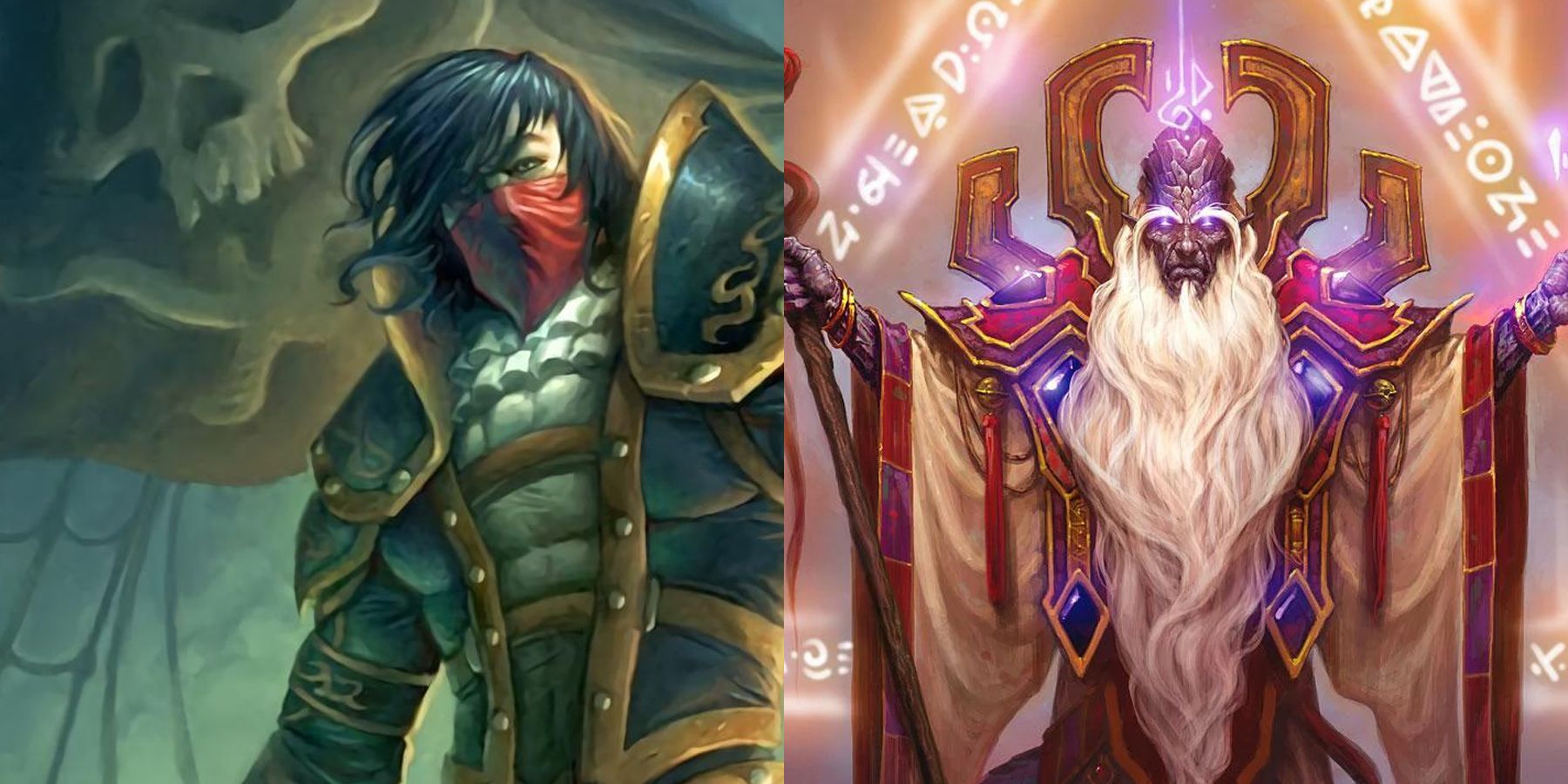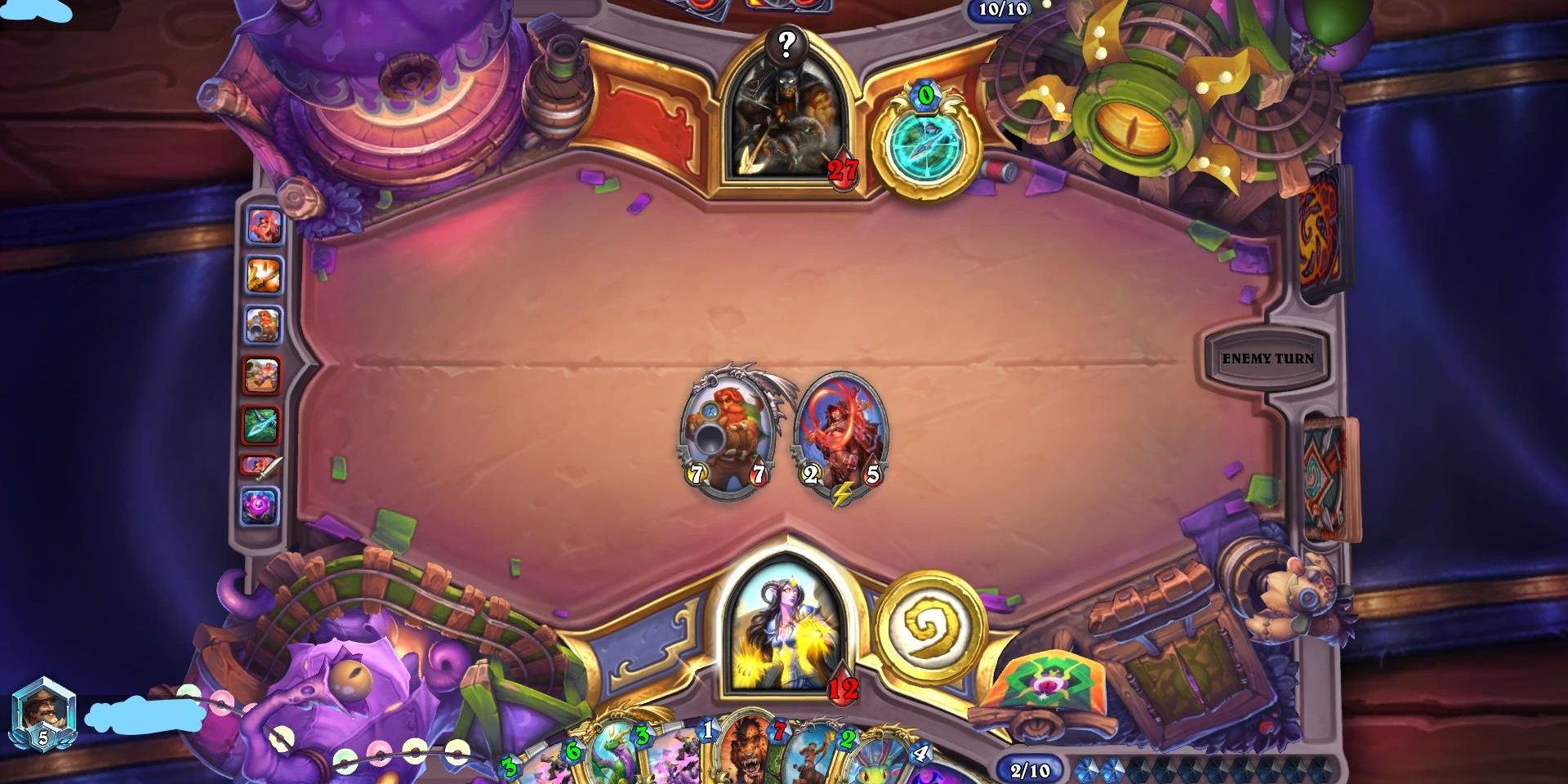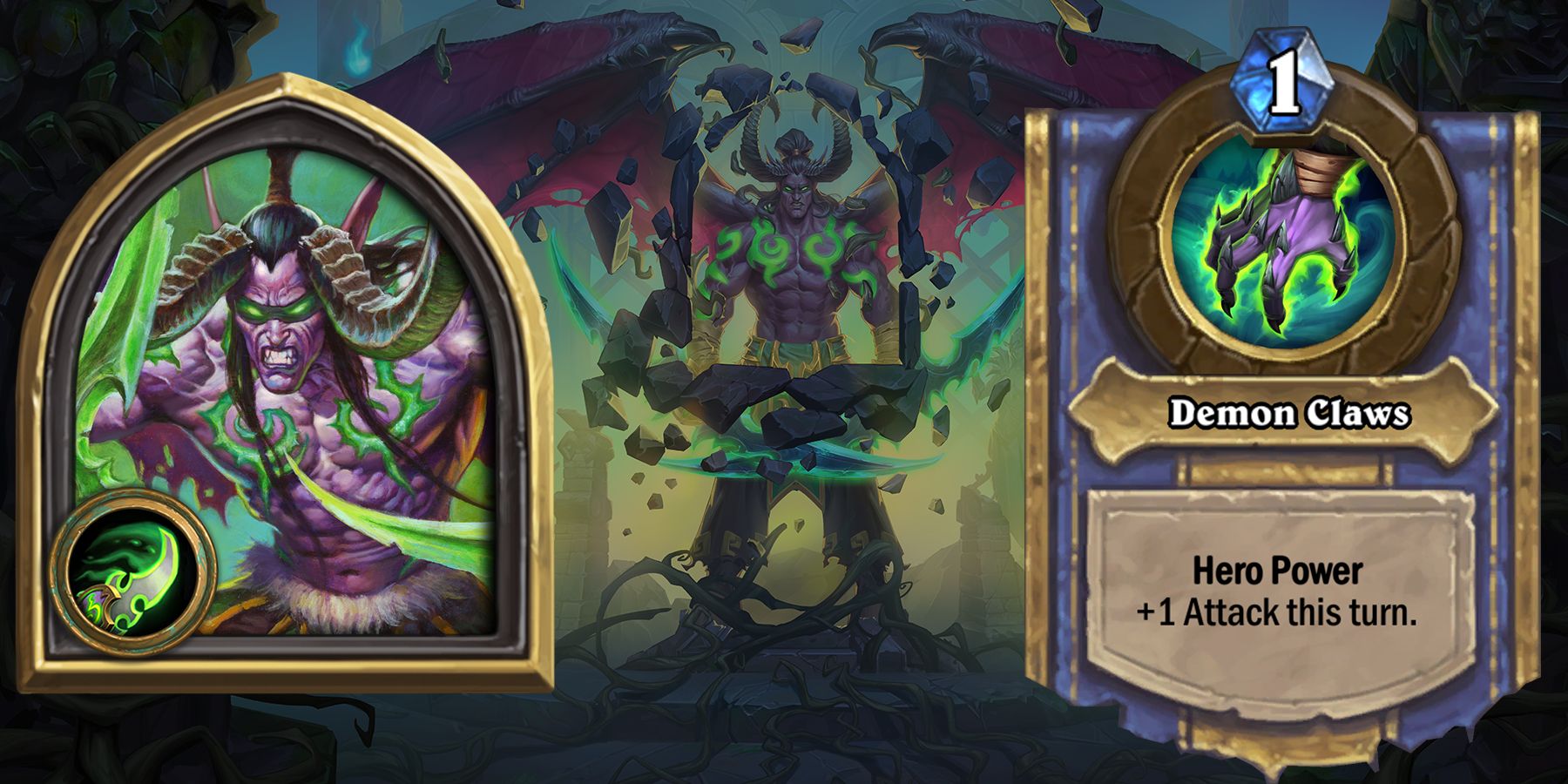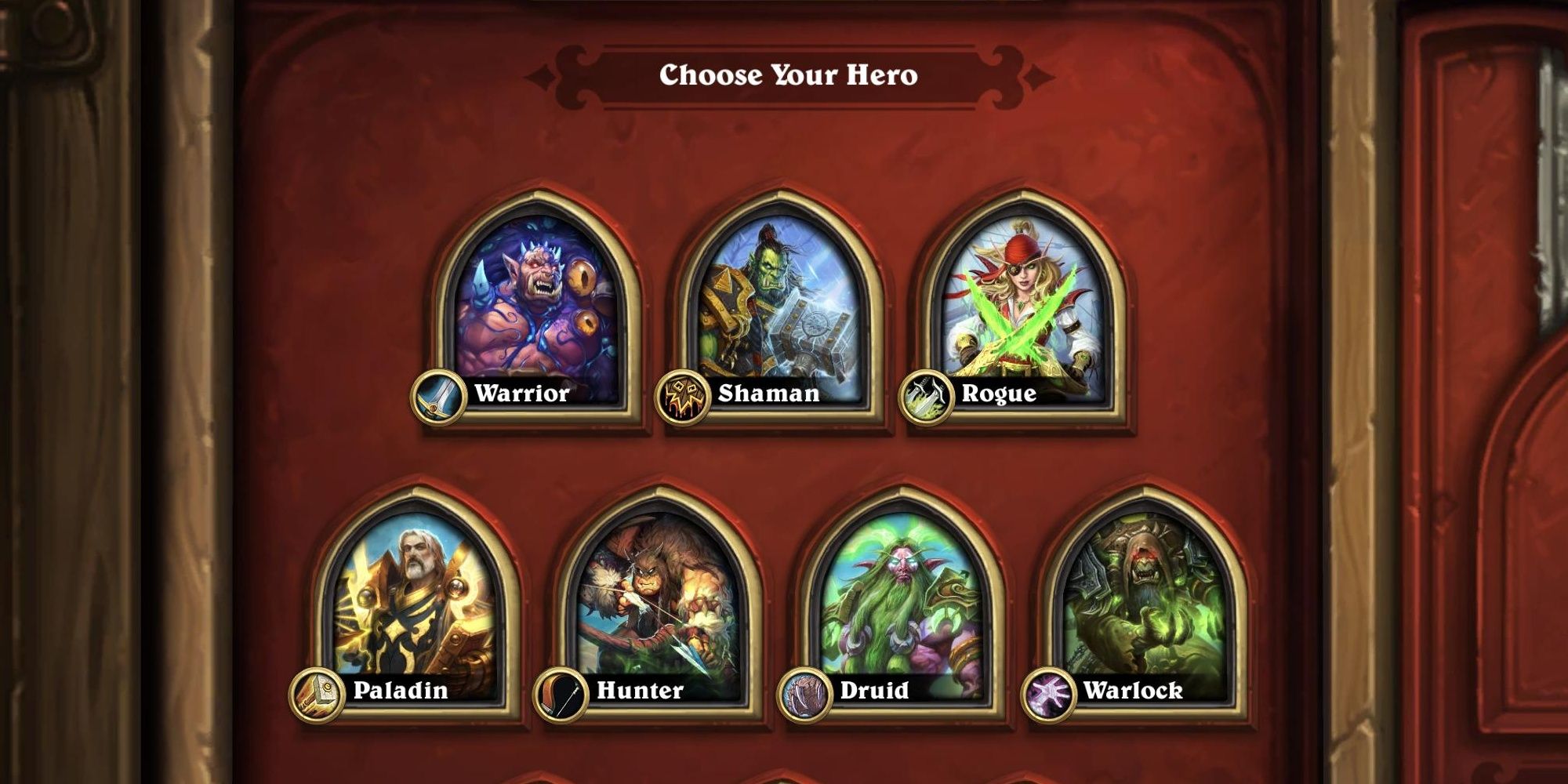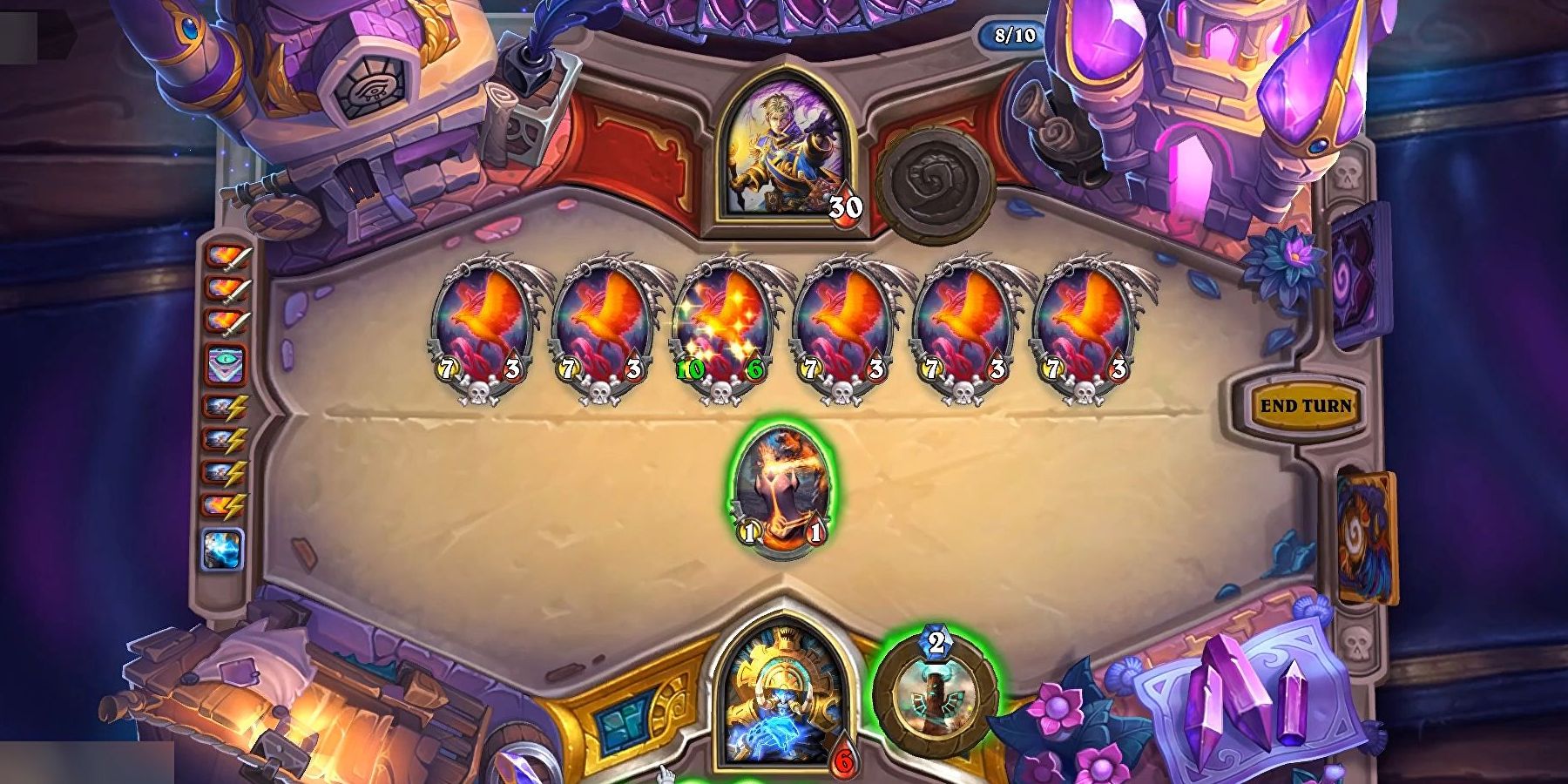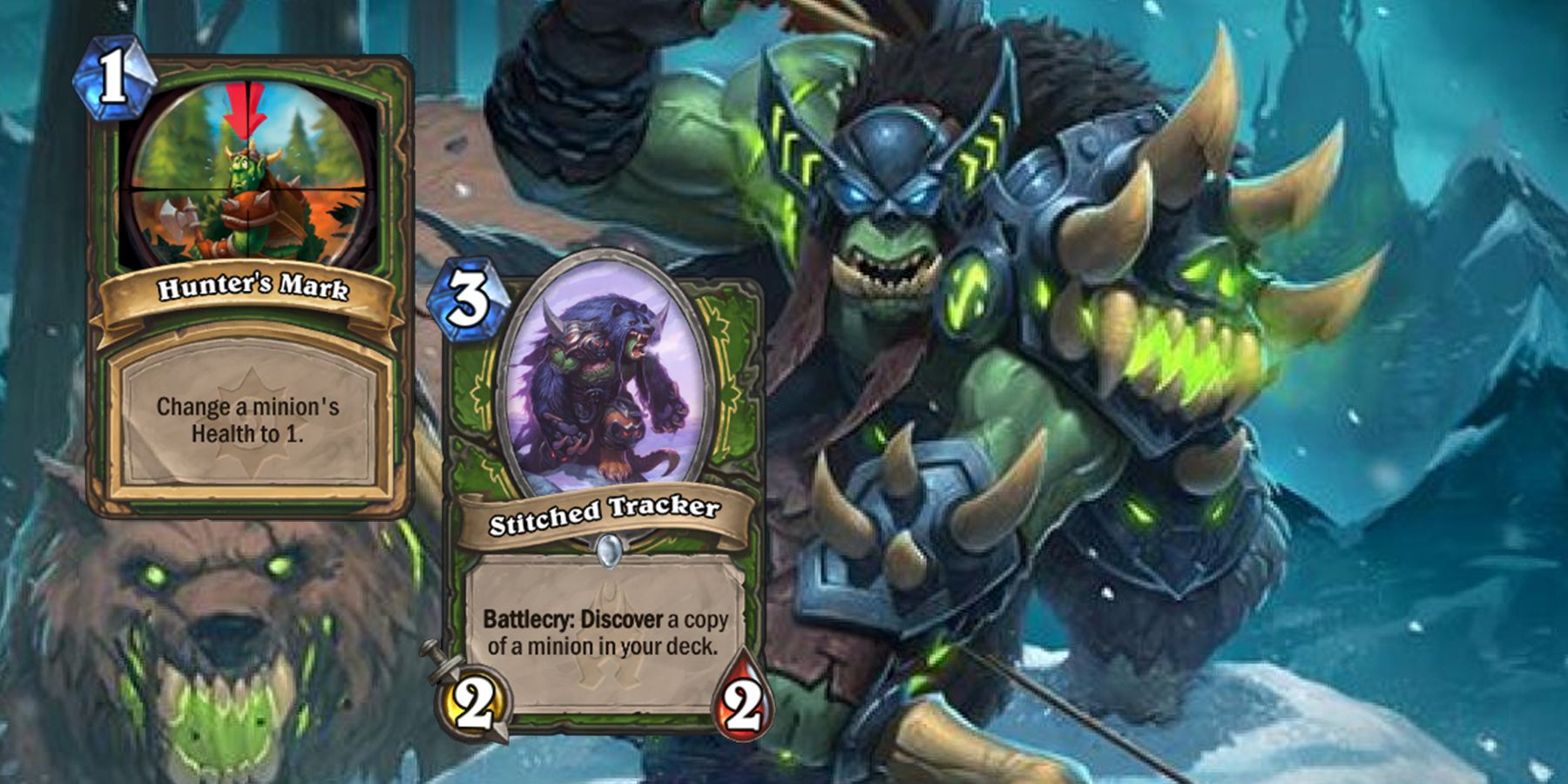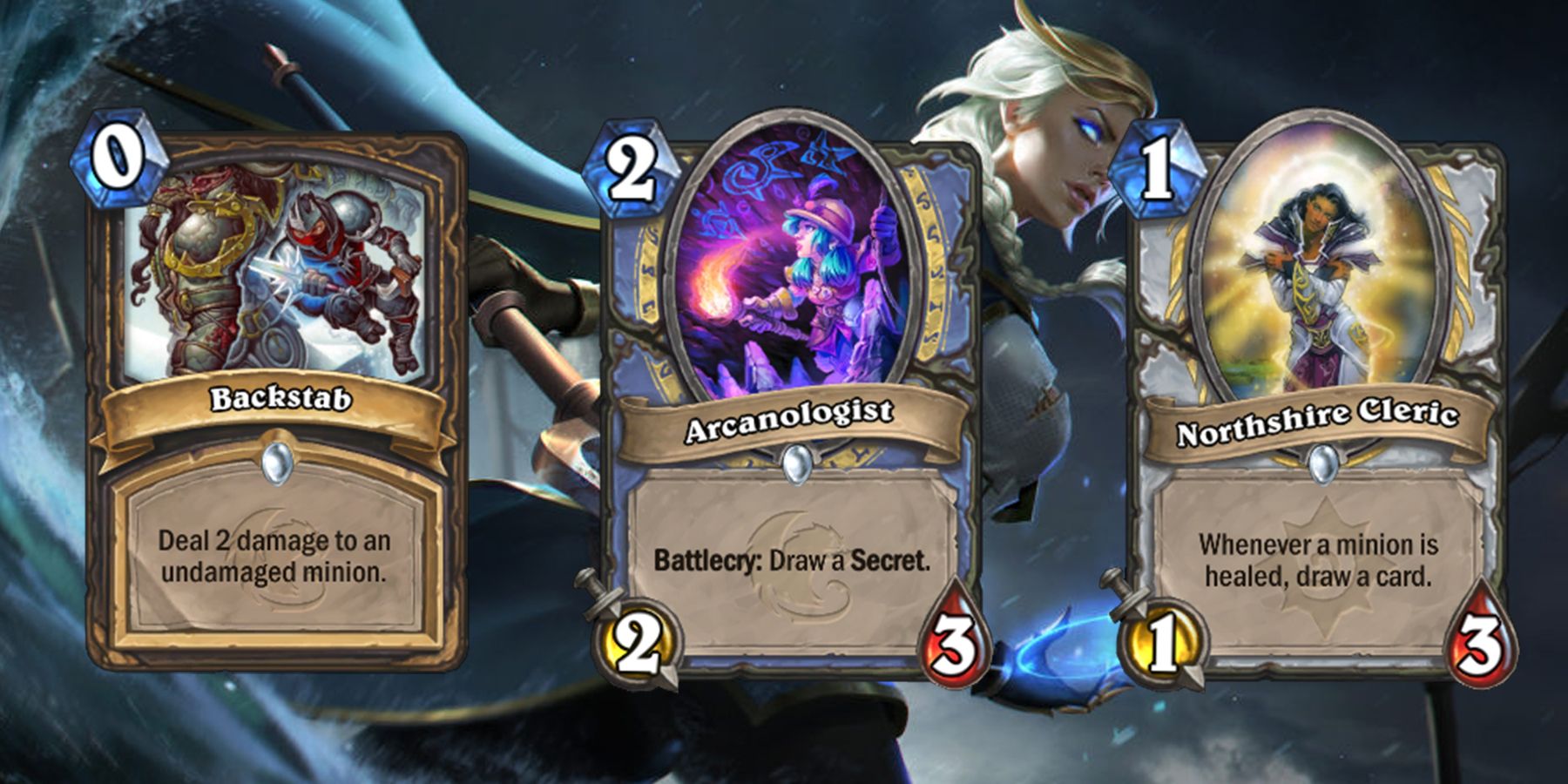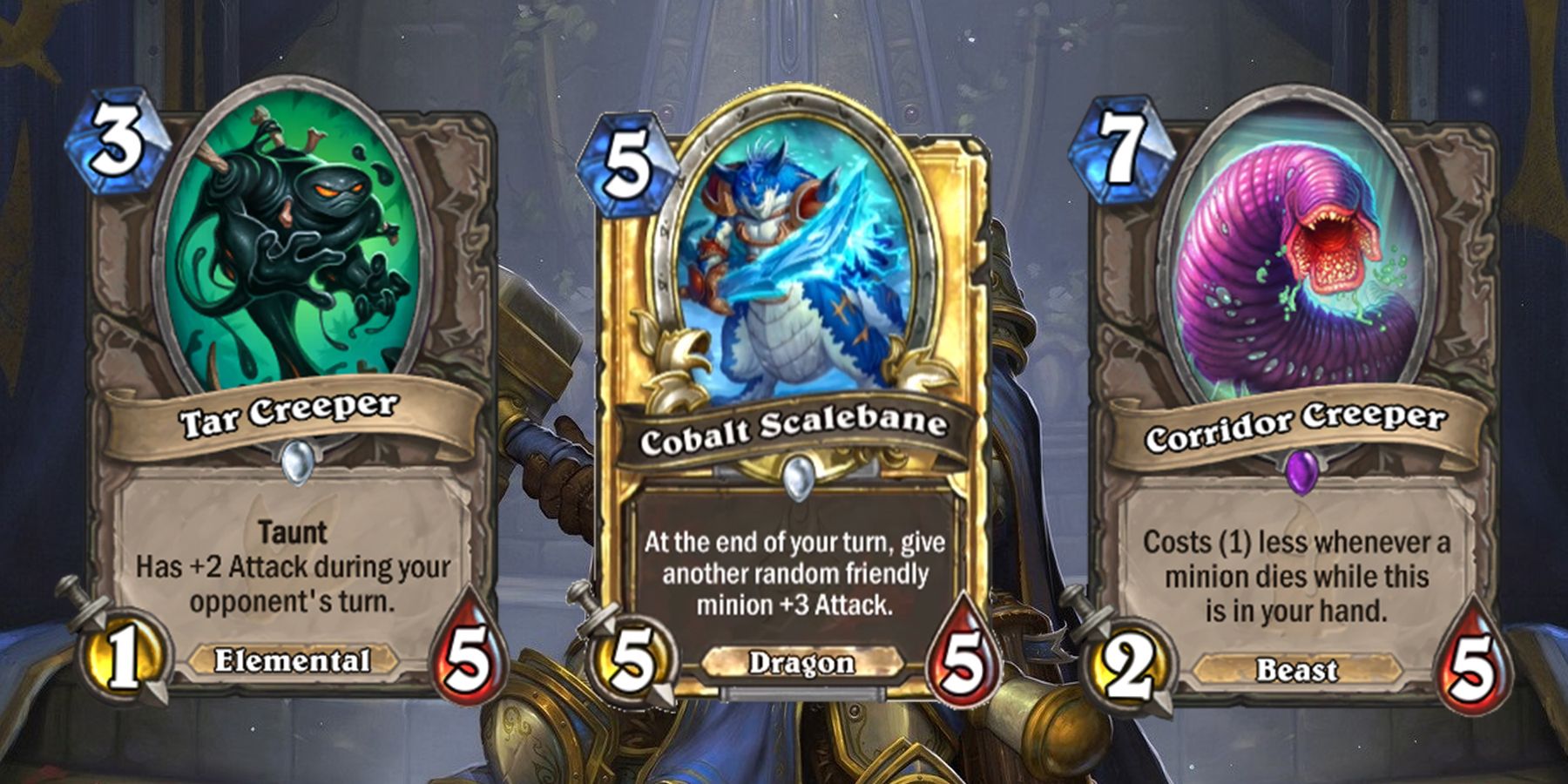Fans of TCGs would appreciate Hearthstone for being a much faster take on card games, as well as its central theme connected to Blizzard’s hit World Of Warcraft series. And separate from the hit Blizzard MMO, Hearthstone gives the impression of a light-hearted tavern game instead of the serious plotlines surrounding World Of Warcraft. However, apart from that light-hearted premise is a competitive card game where even a misstep in as early as deck building could cost any player their match.
Not to mention, deck building itself seems overwhelming given the many numbers of cards and play styles a player could use to approach a match. Thankfully, deck building shouldn’t be extremely difficult for both newcomers and CCG vets, as they can follow some practical tips to build their best deck.
7 Get The Basics Out Of The Way
Before newcomers even begin to dream of their top-tier deck, it helps to clear some of the basics out of the way. Like other online card games, Hearthstone sets up a bit of a learning curve before players actually get to start building their own decks. Newcomers who have just opened Hearthstone for the first time need to take note of some things:
- Keep practicing with the Mage and Hunter Classes: There’s a reason why the Mage remains the starter class in the game, and that’s because of its rather flexible playstyle. Its core cards remain rooted into all of Hearthstone’s main mechanics, meaning the Mage deck is a great way for players to familiarize themselves with how cards and deeper strategies work. An alternative here is the Hunter, given its propensity for faster gameplay.
- Pay attention on how to get Gold: Albeit a bit obvious, players should remember to always maximize their opportunities to win Gold in a day. These include winning some matches, hitting achievements, and completing quests. Gold is the best way for players to access the Arena and/or buy Packs to build their deck.
- Dust redundant cards for crafting: In Crafting Mode (via My Collection), players will be able to craft cards they don’t own in exchange for dust. Players can also obtain dust by destroying cards they want to get rid of. Try to reserve this for cards that got nerfed out of the meta.
- Spend Gold at the Arena instead of Packs: When players earn a decent amount of Gold via the regular game modes, it can become very tempting to spend them on Packs to unlock cards. However, it’s much better to spend them to join the Arena instead. While it comes at a steep 150 GP cost, Arena does guarantee a free Pack whether players make it to the end, and there are likely other freebies as well.
6 Secure A Win Condition
Granted, the only way to win a game in Hearthstone is to reduce the opponent’s 30 Life to 0 Life throughout the match. However, as any card game enthusiast knows, an efficient deck will have a playstyle of a win condition that eventually leads to the opponent losing the match.
What’s A Win Condition?
Most decks only have a single win condition, while others can have a wide range of win conditions depending on the kind of cards they have. At its core, great win conditions have the following characteristics:
- Powerful enough to defeat an opponent. An ideal win condition is a strategy that capitalizes on the strength of the deck to pummel the opponent to submission.
- Consistent enough to be a recurring element. An ideal win condition is one that can happen in consecutive matches.
Caveats Of Win Conditions
Unfortunately, not all win conditions are perfect. When building a deck, players need to consider the following disadvantages of any win condition:
- Powerful win conditions are often hard to pull off. Due to the extreme nature of powerful win-cons, they often take too long to set up and players might risk losing the match to meet the winning criteria.
- Powerful win conditions might cost a lot. Due to the rarity of cards with powerful effects, making a deck with a powerful win-con might be resource-intensive.
- Consistent win conditions aren’t sustainable. Due to the low-power cost of consistent win-cons, they’re likely not enough to support the players in a long match.
- Consistent win conditions don’t have enough punch. Since cards of consistent win-cons often cost less, they won’t have enough punching power to take care of more powerful creatures.
Examples Of Win Conditions
Most win conditions revolve around the usage of a particular card. Here are some examples of cards and their intended win-cons:
- Edwin VanCleef (Legendary): This card gains +2/+2 for every other card the players use this turn. As such, the more cards players use, the stronger VanCleef gets - aiming for a power kill.
- Prophet Velen (Legendary): This card doubles the damage and healing of all spells as well as Hero Powers. As such, this card incentivizes a control or spell-heavy approach that can eliminate the opponent without a lot of minions.
5 Choosing The Class, The Hero Power
Avid fans of card games such as Magic: The Gathering will remember that decks often have color combinations that determine the kind of mana they need and the “playstyle” of that deck. For instance, Red decks lean towards low-cost aggro plays, while Blue decks lean towards spells and controlling the match. Hearthstone follows a similar system, however, they instead use Classes with dedicated Hero Powers that encourage certain playstyles.
What’s The Class?
Taking cues from WoW, Classes in Hearthstone correspond to the particular playstyle a deck hopes to achieve throughout the match. Ideally, decks should complement the main Class they’ve chosen and vice versa. At its core, Classes have these basic characteristics:
- Demon Hunters excel in dealing damage based on their fallen brethren.
- Druids have abilities that boost their mana generation rate, allowing them to tap into powerful spells quickly.
- Hunters have access to quick damage abilities, making them deadly on the get-go.
- Mages have a lot of strong spells that can damage enemies in a multitude of ways, alongside spells that manipulate the battlefield to their favor.
- Paladins can bless their allies with a variety of buffs and protect them constantly.
- Priests specialize in healing their allies and halting enemies on their tracks.
- Rogues love attacking in bursts and activating combos that have devastating effects.
- Shamans can Overload their mana and tap into more resources than ordinarily available, making them good burst attackers.
- Warlocks use their own Health to capitalize on additional abilities, making them deadly for risk-reward engagements.
- Warriors synergize their resources with deadly attacks and effects that trigger when they damage foes.
What's Hero Power?
A Hero in Hearthstone is comparable to the Planeswalker in MTG, which is a special character with a special ability. In Hearthstone, the Hero represents the player. They’re often taken from the story of World of Warcraft and correspond to several popular story characters.
Heroes all have what’s called a Hero Power, which reflects their character and aims to characterize a player’s playstyle. Examples of Hero Powers include:
- Steady Shot (Hunter). Its basic 2-cost version will deal 2 damage to the enemy hero. This encourages an aggressive, damage-heavy playstyle directed to the opponent.
- Fireblast (Mage). Its basic 2-cost version deals 1 damage. Note that it doesn’t specify a specific target, meaning players can choose which card they damage with Fireblast. This adds to the flexibility encouraged by the Mage Class.
4 Remember The Mana Curve
Players of card games such as MTG will likely find Hearthstone familiar due to its mana system. Whereas MTG has Land cards that can be tapped for mana, Hearthstone has a mana system that automatically gets refilled next turn, with some cards affecting the provision and number of permanent mana a player can get. Since mana is the main resource in Hearthstone, it makes sense for deck-building to heavily rely on mana as well. Th deck-building process is called the Mana Curve
What’s The Mana Curve?
The Mana Curve is a bell curve that enumerates the distribution of cards in a deck based on their mana cost. Ideally, there should be an equal distribution of low-cost and high-cost mana cards. Given the bell curve analogy, more cards should be playable in the mid-game compared to the early and endgames.
What’s The Point Of The Curve?
There’s not much point in a deck with an uber-powerful creature or spell when the player doesn’t have enough mana to summon it in a turn. To avoid these vulnerable moments, players should almost always have cards to play in accordance with the mana they have. Ideally, they should be able to play a 2-cost card by Turn 2, and so on.
Instead of focusing on securing high-cost cards with powerful effects, players of efficient decks are better off with low-cost cards they can consistently play while having backup high-cost cards to keep the enemy on edge.
3 Add The Core Cards For The Win-Con
Now that players have a particular win-con, it’s best to secure the cards that guarantee the success of this victory condition. Explaining this in a one-off version can get tricky, as win-cons vary from deck to deck.
However, something to keep in mind is that win-cons take priority over Class-related cards in deck-building. A player’s Class choice will utilize the win-con cards to secure match points as efficiently as possible. Here are examples of win-cons alongside some core cards:
- Aggro Demon Hunter: This win-con archetype focuses on dealing damage directly to the opponent. Cards such as Glaivebound Adept, Stiltstepper, Bonechewer Brawler, and Intrepid Initiate boost the Demon Hunter’s attack to give it pressuring power.
- Recruit Hunter: This win-con archetype banks on the mid-game for the Hunter to be able to summon powerful creatures. Cards such as Hunter’s Mark, Stitched Tracker, Flanking Strike, and Kathrena Winterwisp enable the Hunter to summon various beasts, augment their stats, and mount an offense that’s tricky to counter.
- Resurrect Priest: This win-con archetype uses a lot of spells to buff low-powered minions, alongside spells that give Priests the chance to resurrect fallen ones. Cards such as Resurrect, Eternal Servitude, Archmage Vargoth, and Shadow Essence let the Priest spam-resurrect dead minions to overwhelm the enemy ranks.
2 Add Class Support Cards For Overall Synergy
After adding win-con cards to the deck, players should then focus on adding cards that support the intended synergies of their Class. These often come in the form of “must-haves” that Classes ordinarily use in most situations. Examples of Classes with staple cards are the following:
- Arcanologist: The Mage has a spell-reliant playstyle that could greatly use the Arcanologist. Their Battlecry enables players to draw a Secret, which is a type of spell that has a delayed - but usually more powerful - effect.
- Backstab:The Rogue will almost always have a Backstab card with them, which deals 2 damage to an undamaged minion. This supplements the Rogue’s burst-reliant playstyle.
- Northshire Cleric: The Priest is almost always paired with cards that supplement their healing capabilities. In the case of the Northshire Cleric, Priests can use this card to draw from the deck whenever they heal a minion - greatly increasing their card advantage.
1 Consider Adding Neutral Cards
After adding both core cards and Class cards, it’s always safe for decks to have neutral cards that don’t necessarily focus on a playstyle but are individually useful. They’re not as powerful as the staple cards in a deck, but they should be able to synergize to the overall approach a player has towards their deck. There are some examples of neutral cards that are popular based on control or aggressive builds:
- Corridor Creeper: This 7-cost minion will cost 1 less whenever a minion dies while Corridor Creeper is in the player’s hand. This works well with most minion-based builds, such as Demon Hunters that rely on minion deaths.
- Cobalt Scalebane: This 5-cost minion will grant a random friendly minion +3 Attack at the end of the player’s turn, which is useful for burst builds such as Hunters and Warriors.
- Tar Creeper: This 3-cost minion has Taunt, which gives it +2 Attack during the opponent’s turn. Tar Creeper becomes a good deterrent against aggressive opponents.
Hearthstone was released on March 11, 2014 and is playable on Windows, macOS, iOS, and Android.




